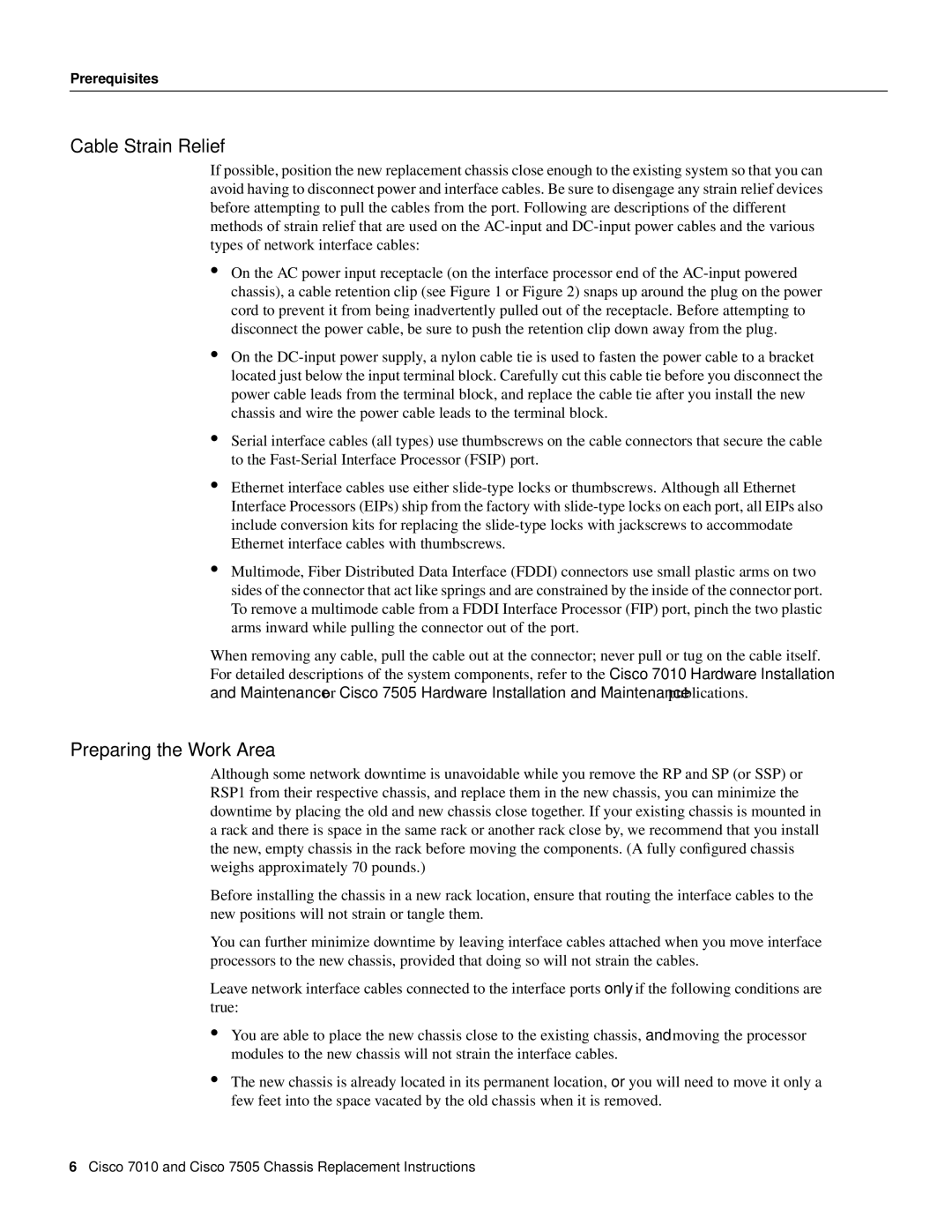Prerequisites
Cable Strain Relief
If possible, position the new replacement chassis close enough to the existing system so that you can avoid having to disconnect power and interface cables. Be sure to disengage any strain relief devices before attempting to pull the cables from the port. Following are descriptions of the different methods of strain relief that are used on the
•On the AC power input receptacle (on the interface processor end of the
•On the
•Serial interface cables (all types) use thumbscrews on the cable connectors that secure the cable to the
•Ethernet interface cables use either
•Multimode, Fiber Distributed Data Interface (FDDI) connectors use small plastic arms on two sides of the connector that act like springs and are constrained by the inside of the connector port. To remove a multimode cable from a FDDI Interface Processor (FIP) port, pinch the two plastic arms inward while pulling the connector out of the port.
When removing any cable, pull the cable out at the connector; never pull or tug on the cable itself. For detailed descriptions of the system components, refer to the Cisco 7010 Hardware Installation and Maintenance or Cisco 7505 Hardware Installation and Maintenance publications.
Preparing the Work Area
Although some network downtime is unavoidable while you remove the RP and SP (or SSP) or RSP1 from their respective chassis, and replace them in the new chassis, you can minimize the downtime by placing the old and new chassis close together. If your existing chassis is mounted in a rack and there is space in the same rack or another rack close by, we recommend that you install the new, empty chassis in the rack before moving the components. (A fully configured chassis weighs approximately 70 pounds.)
Before installing the chassis in a new rack location, ensure that routing the interface cables to the new positions will not strain or tangle them.
You can further minimize downtime by leaving interface cables attached when you move interface processors to the new chassis, provided that doing so will not strain the cables.
Leave network interface cables connected to the interface ports only if the following conditions are true:
•You are able to place the new chassis close to the existing chassis, and moving the processor modules to the new chassis will not strain the interface cables.
•The new chassis is already located in its permanent location, or you will need to move it only a few feet into the space vacated by the old chassis when it is removed.
6Cisco 7010 and Cisco 7505 Chassis Replacement Instructions
